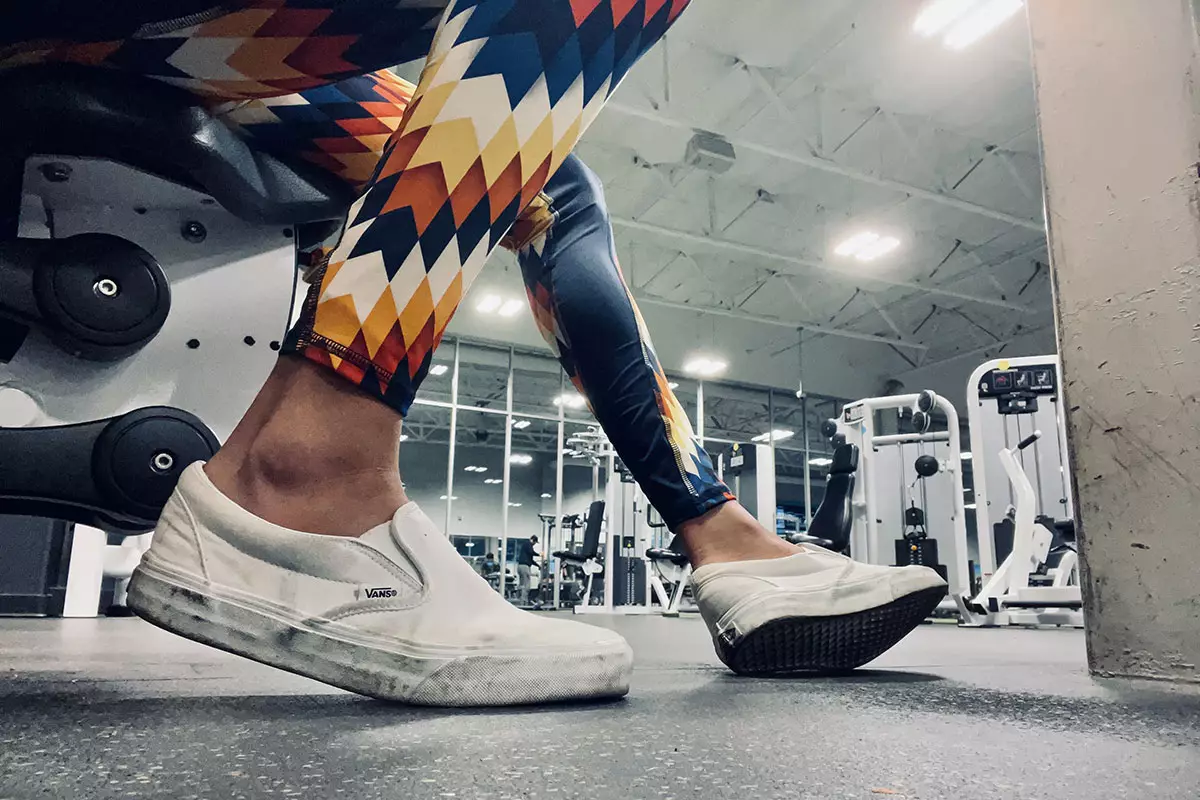Understanding how exercise influences blood pressure is essential for anyone seeking to enhance their health. High blood pressure, or hypertension, is a significant risk factor for serious health conditions, including heart disease and stroke. This article explores the science behind the relationship between exercise and blood pressure, highlighting the benefits of even small increments of physical activity.
By incorporating just a few extra minutes of movement into your daily routine, you can improve cardiovascular health, manage stress, and enhance your overall well-being. We will provide practical strategies for integrating exercise into your life, along with inspiring real-life success stories that demonstrate the transformative power of regular physical activity.
In this article you will find:
The Science Behind Blood Pressure and Exercise
Understanding the relationship between exercise and blood pressure is crucial for anyone looking to improve their health. Blood pressure, the force of blood against the walls of the arteries, is a key indicator of heart health. High blood pressure, or hypertension, can lead to serious health issues such as heart disease, stroke, and kidney problems. Fortunately, engaging in regular physical activity is one of the most effective ways to manage and lower blood pressure.
How Exercise Affects Blood Pressure
Exercise impacts blood pressure in several ways. During physical activity, your heart works harder to pump blood to the muscles, which temporarily raises blood pressure. However, regular exercise strengthens the heart muscle, allowing it to pump blood more efficiently. This improved efficiency can lead to lower resting blood pressure over time.
- Vasodilation: Exercise promotes the widening of blood vessels, which reduces resistance and lowers blood pressure.
- Weight Management: Physical activity helps maintain a healthy weight, which is essential for controlling blood pressure.
- Stress Reduction: Exercise reduces stress hormones and increases endorphins, leading to improved mood and lower blood pressure.
The Role of Aerobic and Resistance Training
Different types of exercise can have varying effects on blood pressure. Aerobic exercises, such as walking, jogging, cycling, and swimming, are particularly effective for lowering blood pressure. These activities increase heart rate and improve cardiovascular endurance.
Resistance training, such as weight lifting, is also beneficial. It not only helps build muscle but can also contribute to lowering blood pressure when combined with aerobic activities. A balanced fitness regimen that includes both aerobic and resistance training is recommended for optimal heart health.
Current Research and Guidelines
Recent studies have shown that even small increments of exercise can significantly impact blood pressure levels. For instance, a study published in the American Heart Association Journal found that just 5 additional minutes of moderate exercise daily can lead to meaningful reductions in blood pressure over time. This finding emphasizes the importance of incorporating more physical activity into your daily routine, regardless of your current fitness level.
The American College of Sports Medicine recommends at least 150 minutes of moderate aerobic exercise per week for adults, which can be broken down into manageable sessions. Consistency is key; even small, regular bouts of exercise can lead to long-term benefits for blood pressure and overall health.
Conclusion and Transition to Next Section
Understanding the science behind how exercise influences blood pressure empowers individuals to take control of their health. By incorporating more physical activity into your daily life, you can effectively lower your blood pressure and improve your overall well-being. In the next section, we will explore the many benefits of just five more minutes of daily movement and how it can transform your health journey.
Benefits of Just Five Extra Minutes of Daily Movement
In our fast-paced world, finding time for exercise can feel daunting. However, the concept of dedicating just five extra minutes of movement each day can yield significant health benefits, especially for those looking to improve their cardiovascular health and manage blood pressure. This small commitment can lead to a ripple effect of positive changes in both physical and mental well-being.
Micro-Workouts and Their Impact
Micro-workouts, or brief bursts of physical activity, can be incredibly effective. Engaging in just five minutes of exercise can help break the sedentary cycle that many of us find ourselves in, especially with desk jobs or long periods of inactivity. Research suggests that even short bouts of activity can improve heart health, enhance mood, and increase energy levels.
- Improved Circulation: Short bursts of exercise can enhance blood flow, helping to lower blood pressure and improve overall cardiovascular function.
- Boosted Metabolism: Just a few minutes of movement can kickstart your metabolism, helping to burn more calories throughout the day.
- Enhanced Mental Clarity: A quick walk or stretch can clear your mind, improve focus, and reduce feelings of stress or anxiety.
Psychological Benefits of Daily Movement
The psychological benefits of incorporating just five more minutes of exercise into your day cannot be overstated. Regular physical activity has been shown to release endorphins, often referred to as the feel-good hormones. This can lead to improved mood, decreased feelings of depression, and heightened overall happiness.
Additionally, setting a small, achievable goal like five extra minutes makes it easier to stay consistent. When you succeed at this small goal, it can motivate you to increase your activity level over time. This sense of accomplishment can foster a positive feedback loop, encouraging further engagement in fitness.
Ways to Incorporate Five Extra Minutes
Incorporating five extra minutes of movement into your daily routine can be simple and enjoyable. Here are some effective strategies:
- Take the Stairs: Opt for stairs instead of elevators or escalators whenever possible.
- Walk During Breaks: Use your coffee or lunch breaks to take a quick walk around your office or neighborhood.
- Set a Timer: Every hour, set a timer to remind you to stand up and stretch or do a few jumping jacks.
- Dance It Out: Play your favorite song and dance for five minutes; it’s fun and energizing!
Scientific Support for Short Activity Bursts
Scientific studies have shown that short, frequent bouts of exercise can be just as effective as longer sessions. According to a study published in the National Institutes of Health, individuals who engaged in several short exercise sessions throughout the day had similar improvements in fitness and health markers as those who completed longer workout sessions.
This evidence supports the notion that even a small increase in physical activity can lead to substantial health benefits, particularly in managing blood pressure levels and enhancing cardiovascular health.
Transition to the Next Section
By committing to just five extra minutes of movement each day, you can experience profound benefits for both your physical and mental health. As we continue this journey towards better health, the next section will explore easy and practical ways to incorporate more exercise into your daily routine, helping you sustain this healthy habit.
Easy Ways to Incorporate More Exercise into Your Routine
Incorporating more exercise into your daily routine doesn’t have to be overwhelming or time-consuming. With a few simple adjustments and creative approaches, you can seamlessly add physical activity to your life. Here are some effective strategies to help you move more and enjoy the numerous health benefits that come with it.
Make Use of Your Environment
Your surroundings can be a great ally in increasing your daily activity levels. Here are some ways to leverage your environment:
- Walk or Bike for Short Trips: Instead of driving for short errands, consider walking or biking. Not only will you get exercise, but you’ll also reduce your carbon footprint.
- Utilize Your Stairs: Choose stairs over elevators or escalators. Stair climbing is an excellent way to strengthen your legs and boost your heart rate.
- Active Chores: Turn household chores into a workout. Activities like vacuuming, gardening, or washing the car can get your heart pumping.
Incorporate Movement into Your Workday
For many, a significant portion of the day is spent at a desk. Here’s how to infuse more movement into your work routine:
- Take Frequent Breaks: Set a timer to remind yourself to stand up and stretch or walk around for a few minutes every hour.
- Walking Meetings: If possible, hold meetings while walking, which can stimulate creativity and productivity while keeping you active.
- Desk Exercises: Utilize simple exercises like seated leg lifts, desk push-ups, or chair squats while working.
Engage in Social Activities
Physical activity can also be a fun and social experience. Here are ways to blend exercise with socializing:
- Join a Class: Participate in a group fitness class, dance class, or sports league to make exercise a social event.
- Active Outings: Plan outings that involve physical activity, such as hiking, playing sports, or visiting a trampoline park with friends or family.
- Volunteer for Active Causes: Engage in community service that involves physical work, like park clean-ups or charity runs.
Set Fun and Achievable Goals
Setting goals can provide motivation and a sense of accomplishment. Consider these tips for goal-setting:
- Start Small: Aim for achievable goals, such as walking an additional 10 minutes per day or completing a short workout video.
- Track Your Progress: Use fitness apps or journals to track your activity, which can help maintain motivation and accountability.
- Reward Yourself: Celebrate your achievements with small rewards, like a new workout outfit or a relaxing day off.
Leverage Technology for Motivation
In today’s digital age, technology can be a powerful tool to help you stay active. Here are some ways to utilize technology:
- Fitness Apps: Use apps that provide workout plans, track your progress, and offer reminders to stay active throughout the day.
- Online Workouts: Access a variety of workout videos online that you can do at home or at the gym, catering to all fitness levels.
- Wearable Devices: Consider using a fitness tracker to monitor your steps, heart rate, and calories burned, encouraging you to move more.
Transition to the Next Section
By implementing these easy strategies, you can effortlessly incorporate more exercise into your daily routine, enhancing your overall health and well-being. Next, we will explore inspiring real-life success stories of individuals who have transformed their lives through commitment to regular exercise, showcasing the power of persistence and dedication.
Real Life Success Stories: Transformations Through Exercise
Exercise is not just about physical transformation; it’s about changing lives, enhancing mental health, and cultivating resilience. Many individuals have embarked on their fitness journeys and achieved incredible success. Here, we share inspiring real-life stories that highlight how commitment to regular exercise can lead to profound transformations.
John’s Journey: From Sedentary to Marathon Runner
At 35, John found himself struggling with obesity and high blood pressure. After a routine check-up, his doctor warned him about the risks associated with his weight and lifestyle. Determined to change, John decided to start small by incorporating short walks into his daily routine.
Gradually, he increased his activity level, incorporating jogging, strength training, and eventually enrolling in a local running club. Within two years, John not only lost over 70 pounds but also completed his first marathon. His story emphasizes the importance of setting achievable goals and building on them over time.
Maria’s Transformation: Embracing Fitness for Mental Health
Maria, a busy mother of three, often felt overwhelmed by her responsibilities. She struggled with anxiety and low energy levels. Seeking a way to regain control of her life, she joined a community yoga class, initially just to find some peace of mind.
To her surprise, Maria found that the physical aspects of yoga also brought her strength and flexibility, which she had lost over the years. As she continued to practice, her anxiety diminished, and she became more active in her daily life. Now, Maria teaches yoga classes herself, inspiring others to find the balance she has achieved.
Tom’s Story: Overcoming Injury Through Rehabilitation
After a serious accident, Tom faced a long road to recovery. Doctors advised him to engage in physical therapy and gradually reintroduce exercise into his life. Initially discouraged, Tom committed to his rehabilitation exercises and focused on building strength through low-impact workouts.
Through dedication and perseverance, Tom not only regained his mobility but also discovered a passion for swimming. He now participates in local swim competitions, demonstrating that setbacks can lead to new beginnings and opportunities for growth.
Community Impact: Group Fitness Transformations
In a small town, a group of friends decided to start a weekly workout session in the park. What began as a casual meet-up quickly transformed into a community fitness movement. Participants of all ages joined, and the group evolved into a supportive network that encouraged members to push their limits.
Over the course of a year, many group members experienced significant weight loss, improved cardiovascular health, and strengthened friendships. Their collective success highlights the power of community support in achieving fitness goals.
Expert Insights: The Psychological Benefits of Transformation
These success stories illustrate not just physical changes but also profound psychological benefits. According to the American Psychological Association, engaging in regular physical activity can enhance mood, reduce anxiety, and improve self-esteem. The shared experiences of John, Maria, Tom, and the community group exemplify how exercise can be a catalyst for positive change in multiple aspects of life.
Inspiration for Your Own Journey
These remarkable transformations serve as a reminder that anyone can embark on a fitness journey, regardless of their starting point. Whether you’re looking to lose weight, improve mental health, or recover from an injury, taking that first step is crucial. Remember, each small effort contributes to a larger goal.
As you continue to explore the benefits of exercise and the impact it can have, consider how you can apply these lessons to your own life. With dedication and support, you too can achieve your fitness aspirations and experience the transformative power of movement. Exercise plays a crucial role in managing blood pressure and improving overall health. Regular physical activity, including aerobic and resistance training, strengthens the heart, promotes vasodilation, aids in weight management, and reduces stress. Engaging in just five extra minutes of daily movement can lead to significant benefits, such as enhanced circulation, improved mood, and increased energy levels. Small, achievable goals help maintain consistency and can foster a positive feedback loop in fitness engagement.
Incorporating more exercise into your routine can be simple and enjoyable. Utilize your environment by walking or biking for short trips, taking the stairs, and turning household chores into workouts. Integrate movement into your workday with standing breaks and desk exercises, and consider joining group classes or community fitness activities for social support. These strategies can lead to profound physical and mental transformations, inspiring you to take control of your health journey.




